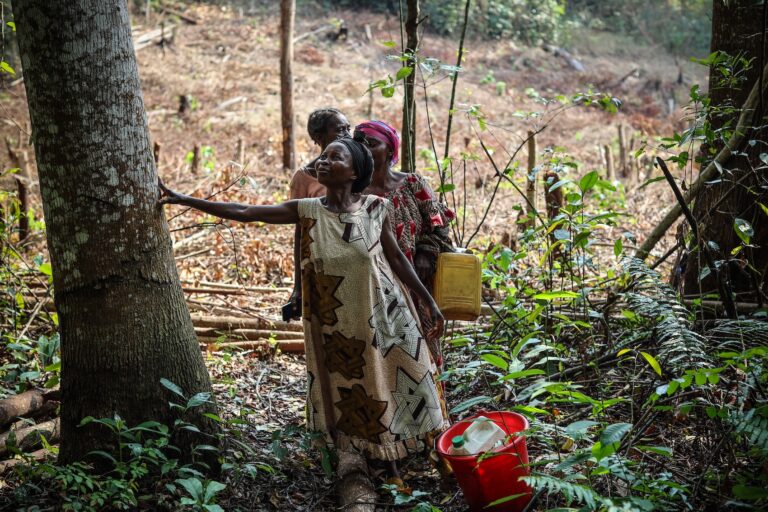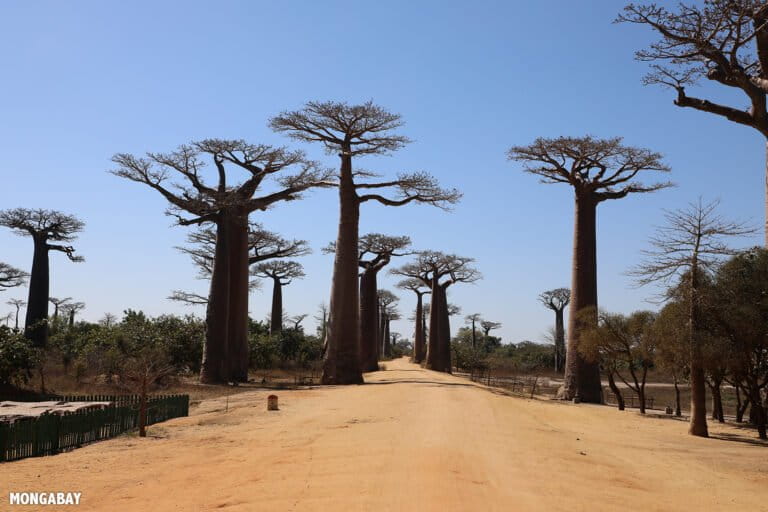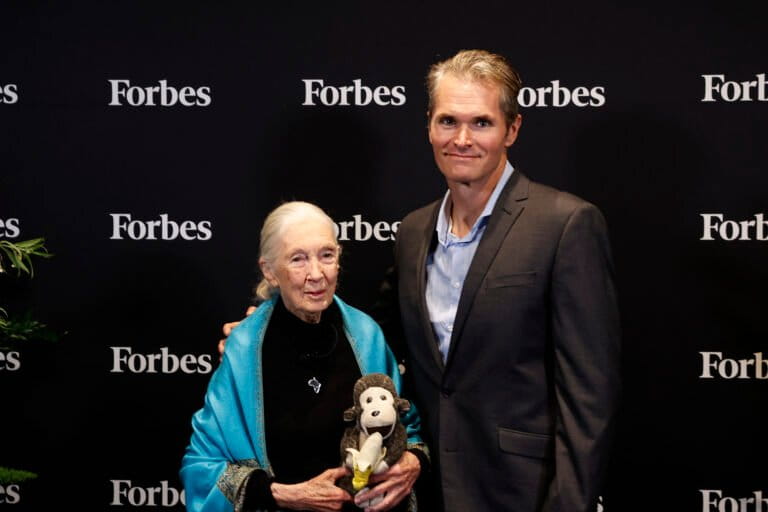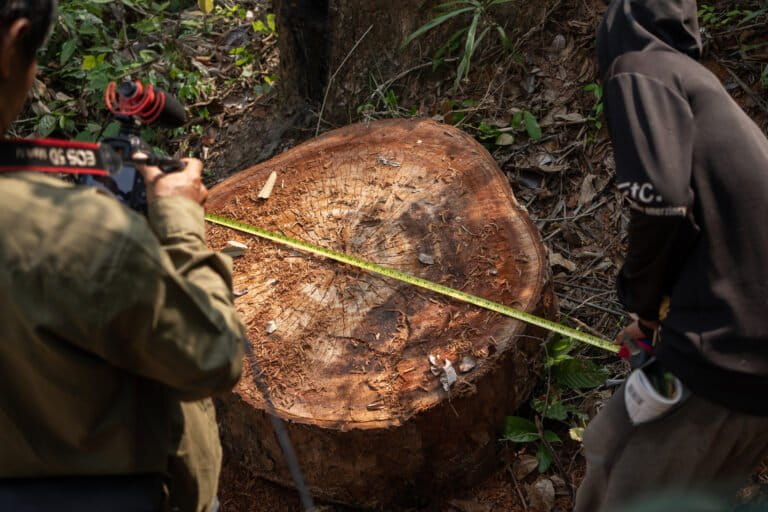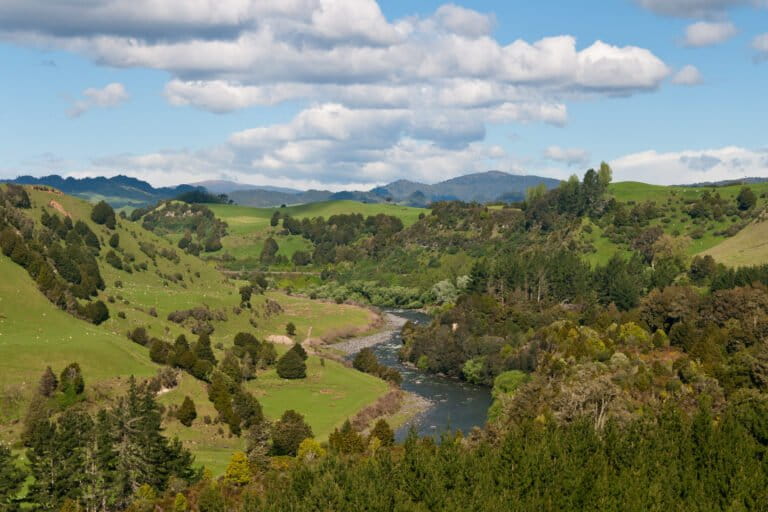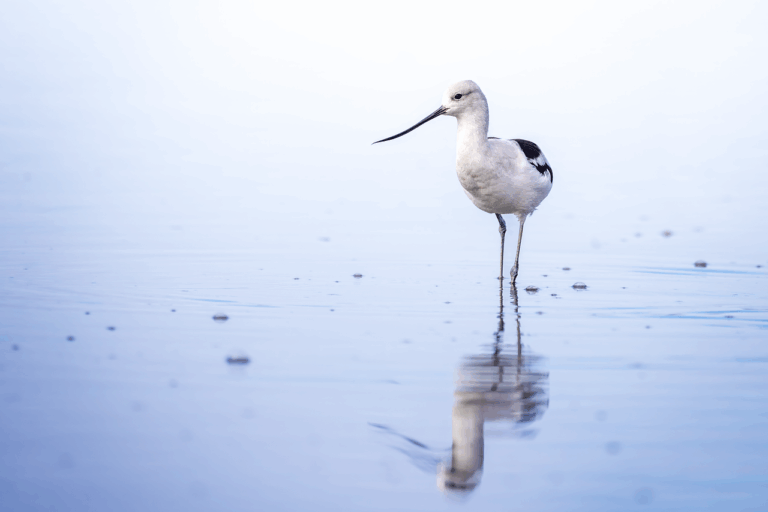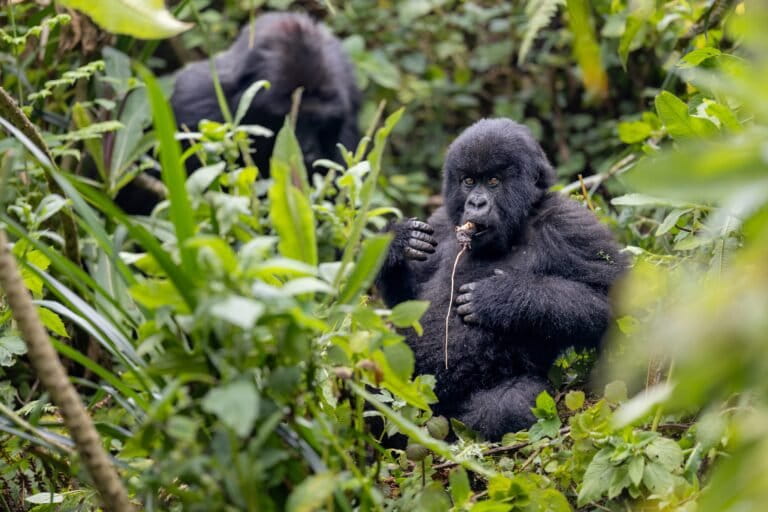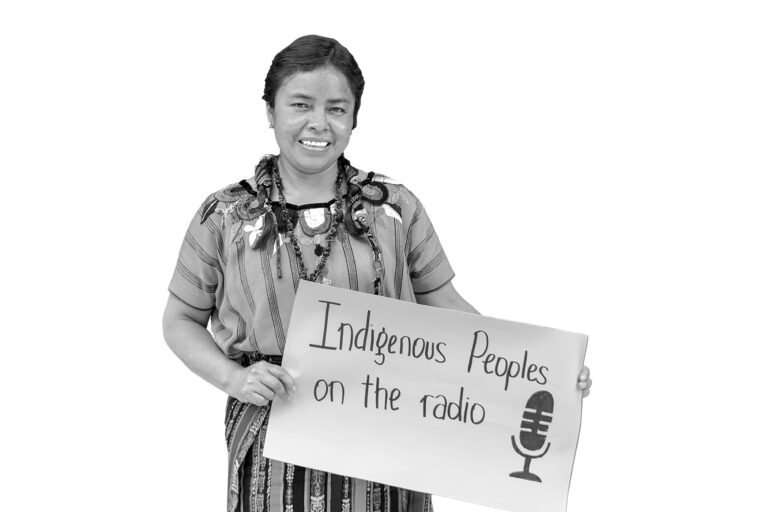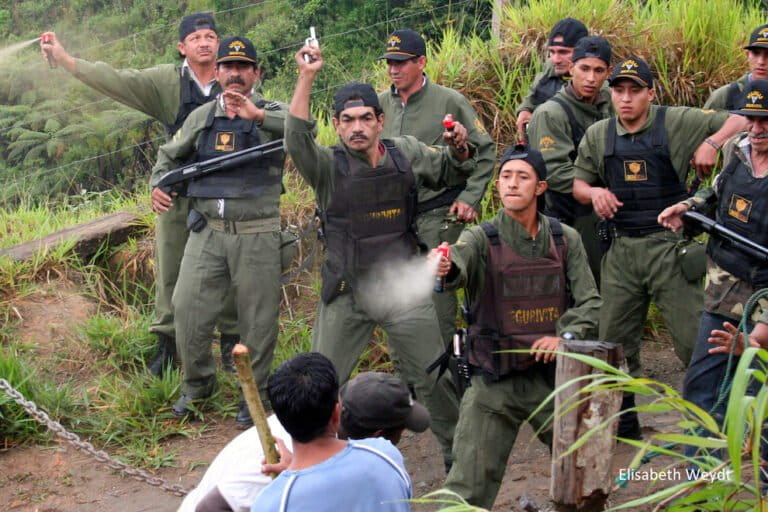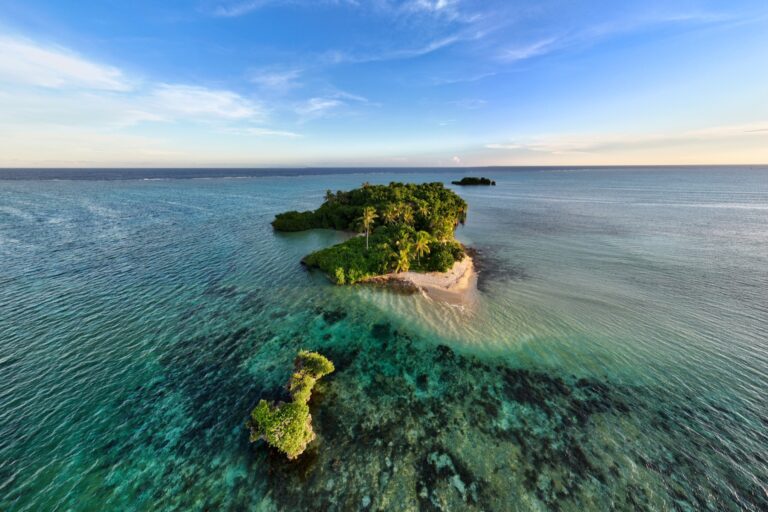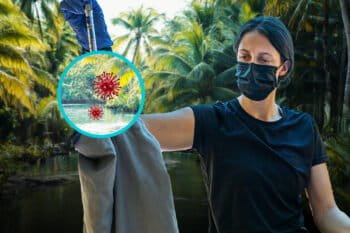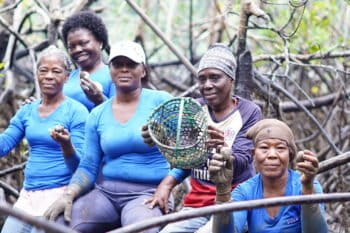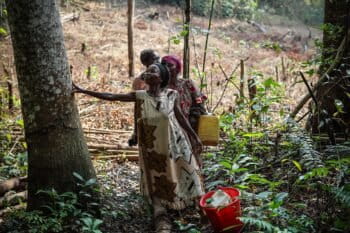Jean-Gaël “JG” Collomb says community-based conservation organizations know best how to tackle the complex conservation challenges unique to their ecosystems. However, they’re also among the most underserved in terms of funding of all stripes. On this week’s episode of Mongabay’s podcast, Collomb explains how his nonprofit, Wildlife Conservation Network (WCN), is working to change that.
When it comes to funding conservation,” it’s really difficult to know who to give your money to besides a handful of organizations that a lot of people are familiar with,” Collomb says.
WCN facilitates partnerships between community-based conservation groups, primarily in Global South nations with funders, in what has previously been described as “‘venture capital for conservation,” or as Collomb says, “people invest in people.”
A common issue flagged by community-based conservation organizations is that funding often comes with strings attached or is tied up in bureaucratic disbursement mechanisms. Collomb wants to see these strings loosened or cut, allowing community experts to use the funds directly, and funding cuts to USAID exacerbate this issue.
They are “the first actors,” he says. “We’re huge fans of being able to encourage people to give unrestricted [funding] … those organizations who are based on the ground in the field know best how to use that money.”
But he also says that philanthropy that is both ethical and transparent is a serious consideration for the organizations WCN partners with.
“I do agree that we have to be very careful as to making sure that when an action is intended to have a positive impact, it is not being undone somewhere else by the same entities … especially in the context of receiving money from corporations.”
Ultimately, Collomb argues that if society is serious about tackling existential issues such as biodiversity loss and climate change, focusing on community and wildlife needs has to be included among international conversations, strategies and bold commitments such as 30×30, a United Nations commitment to protect 30% of Earth’s land and waters by 2030 initially agreed to at the U.N. biodiversity summit in Cali, Colombia, last year.
“What happens at these [summits is] one thing. But then the real work happens … when money actually hits the ground,” he says. “The flow of that money to those frontline actors has been slower than what most people anticipated for a variety of reasons, and I would encourage us all to do what we can to speed that up.”
Subscribe to or follow the Mongabay Newscast wherever you listen to podcasts, from Apple to Spotify, and you can also listen to all episodes here on the Mongabay website.
Please send questions, feedback or comments to podcast[at]mongabay[dot]com.
Banner image: Beach on Mioskon Island in Raja Ampat. Photo by Rhett Bulter/Mongabay.
Mike DiGirolamo is a host & associate producer for Mongabay based in Sydney. He co-hosts and edits the Mongabay Newscast. Find him on LinkedIn, Bluesky and Instagram.
Related reading:
Refocusing conservation funding on trust & community leadership after USAID freeze (commentary)
Wildlife conservation is a key climate change solution (commentary)
Transcript
Notice: Transcripts are machine and human generated and lightly edited for accuracy. They may contain errors.Jean-Gaël “JG” Collomb: To me it comes down to respect. If we don’t treat our house well, if we don’t treat our environment well, then our own health is going to suffer. So, I think it’s too easy to forget when we live somewhat in the isolation of the environment and we don’t stop to think that we depend on clean water, on healthy grasslands, on clean air, for our life…
Mike DiGirolamo: Welcome to the Mongabay Newscast. I’m your cohost, Mike DiGirolamo. Bringing you weekly conversations with experts, authors, scientists and activists working on the front lines of conservation, shining a light on some of the most pressing issues facing our planet, and holding people in power to account. This podcast is edited on Gadigal land. Today on the newscast we speak with Jean-Gaël Collomb, who also goes by JG. He’s the CEO of the Wildlife Conservation Network, a nonprofit in the San Francisco Bay area of California that helps grassroots and local conservation organizations around the world secure funding. Put another way, it could be described as a bit of a venture capital firm for conservation. We wanted to speak with Collomb about his organization’s work, and crucially why community-based conservation is critical to addressing biodiversity loss and climate change—thoughts that he recently penned in a joint op-ed with Peter Lalampaa. Collomb weighs in on initiatives like 30×30, protecting 30% of the Earth’s lands in water by 2030. And he agrees that Indigenous sovereignty is a must for this initiative. But he adds, it is vital for Indigenous perspectives to be centered in every global conversation on how to protect the environment. Local communities are at the front line and have firsthand knowledge of the best way to implement conservation measures. He argues. We talk about conservation, philanthropy, specifically the ethics and transparency of philanthropic funding and why unrestricted funding (that is funding that communities decide how to use) is a critical component to getting it right. I really enjoyed speaking with Collomb and I found his clarity on community and wildlife needs to be refreshing, just and practical.
JG, thank you for joining us today. Welcome to the Mongabay Newscast. It’s great to have you with us
JG: Thank you for having us. It’s an honor and a pleasure to be with you, Mike.
Mike: And we’re going to talk a lot about the work that you do today, but the first thing I want to tackle with you is there’s a statement in a recent op-ed that you wrote for us, and it says, “if we are serious about tackling climate change and preserving biodiversity, we must embrace holistic and inclusive approaches to conservation that integrate both wildlife and community needs.” Now, we can talk about the ‘how’ of that in a little bit, but the first thing I want to talk about is the ‘why’ behind that statement. So why are both wildlife and community needs crucial to tackling biodiversity and climate crises?
JG: Well, I think if you want to fight climate change or climate crisis, I think you have to really invest in and work with the gardeners of that planet, the people who are on that frontline and the other creatures that are on that frontline. So those are the animals. I think our world is really interconnected and so we can’t address the climate crisis if we don’t engage with the people who are directly involved in the impacts of climate change, who have the ability to do something even if it’s at a small scale, because all those small scales add up and all of those other creatures that, are affected and affect our climate, elephants, zebras, penguins, anything that really uses our natural resources, I think, have to be part of a solution.
Mike: And there’s a kind of like this chain reaction that you talk about also in that op-ed that can occur when intensifying climate challenges affect ecosystems, and it’s a very stark, almost domino effect that occurs, like when grasslands in Kenya are impacted by droughts. Can you describe that process for us?
JG: Well, yeah, I mean, when grasslands are impacted by droughts everything ultimately ends up being impacted. The grass quality degrades over time. So a number of different things happen. The is grass is no longer available for the cattle or other livestock that depend on it. And so, the livelihood of the people who depend on that livestock is affected. They go and take their cattle, livestock in other places where there is higher quality grass in some instances that might be in areas that are otherwise protected for wildlife. And so, then there’s a potential conflict with, livestock animals being inside protected areas, which they’re not supposed to be, but out of survival they go there. Those animals can be predated by the wildlife. And so that causes conflict between the wildlife and the people because livestock often is like a, it’s like a bank account for many pastoralist communities. And so, when a lion eats a cow or a goat, it has a real impact, obviously, not just on the animal being eaten, but also on the communities who depend on those animals. And likewise, as the grass gets degraded over time, it’s also harder for the wild animals who depend on that high quality grass to survive. So, the whole ecosystem, slowly gets under more and more pressure. You can imagine a number of other things that happen as it gets drier and drier, it’s more prone to fire. And so that can have other devastating effects. And so, it’s a real vicious cycle that both communities and their livestock and the wildlife and the supporting environment gets put through and it intensifies all those pressures.
Mike: Yeah, it’s really mind blowing how interconnected all these systems are, delicately interconnected. So how does this concept of community-based conservation come into play here? How does it work exactly?
JG: Well, I think in this particular context, and I think this is what Peter and I were trying to articulate in this op-ed. And it’s really at the crux of the work that the Grevy’s Zebra Trust and many other community-based organizations in Africa are engaged in. It’s trying to put the people who are on the frontline of conservation of those natural resources to be able to develop innovative, dynamic, responsive solutions because they’re the first ones affected by it, and they’re the ones who also have a historical knowledge about how this land has been used over time, what kind of pressure it’s been under over time. And sometimes it’s a matter of reviving older practices. Sometimes it’s a matter of adjusting older practices. Sometimes it’s a matter of new innovation. And I think the benefit of engaging with organizations, like the Grevy’s Zebra Trust, and them engaging with the communities that are on the frontline, living in those conservancies in Kenya or any other group that do that similar kind of work, is that it’s really difficult for those of us who are thousands of miles away, who may have scientific approaches to it to really, understand how all of that plays out in real time. And so, there are some great solutions that come out of, of, scientific institutes. There are great things that we can think of through policy, but at some point, no pun intended, the rubber’s going to meet the road or it’s not. In that case, you’re really going to have, behaviors, Choices that people make on the ground. And I think that’s where it’s important to engage with community-based conservationists who can bring together the reality of living there, their traditional ecological knowledge, their understanding of political context, social cultural context, to find solutions that can work for both wildlife and people, in a way that I think is very hard to do when you’re sitting in far and remote offices throughout the world.
Mike: Yeah, and I think this may be a good part to talk about your approach at Wildlife Conservation Network because you work with locally based, conservationists and communities. So, can you just go ahead and outline that for us? What is unique about this approach?
JG: Well, so WCN really, operates in the context of identifying those organizations that are based on the ground and trusting that they know what needs to be done, that they are, as I’ve described, the first actors. And so, they can be very responsive and sensitive to all the complexities that are., that they’re under. And we work hard to support those organizations in a number of different ways, that can be really shining a light on their work so that their voices can be heard. Because oftentimes, the voices of these local conservationists, voices of the local communities is not heard as loudly as the voices of other groups. And so, one thing is to try to elevate their voices so that they can have access to a platform, access to a platform to tell their story, and ultimately also access to a platform to tell their story and be able to get funded for it. Because the work really requires funding. And so, another big part of what we do is we connect directly, philanthropists and supporters to those frontline conservationists and facilitate that transfer of funds so that it actually gets to the point of impact and those actors on the ground. And make sure that this element of trust between the supporters, the philanthropists, and the conservationists is there. There’s a direct connection that we do through events that we organize, but we also put people directly in touch so people can go visit the work in the field. But we bring conservationists here, what we call an expo, so people who are here in the United States can meet the people that they invest in. And oftentimes it then results in ongoing communication via email or social media. And so, there’s a direct engagement. People can see the impact of their work and continue to support it. I think it’s really important because when you’re a local conservation organization, it’s really difficult to find people and organizations who want and can financially support your work. You may have access to grants, but that will only take you in so far. And when you’re an individual donor based in the United States primarily, but the same is also true for others based in Europe, it’s really difficult to know who to give your money to besides a handful of organizations that a lot of people are familiar with, but sometimes you really want to make sure that the money gets on the ground quickly and efficiently, so it’s hard for those two groups to meet. And the Wildlife Conservation Network really operates at this platform to identify strong organizations that are doing wildlife conservation and donors who are interested in supporting it and trying to put them in touch.
Mike: The way you describe that might be similar to how it was described to us about a decade ago. The vice president of WCN at the time explained that you don’t work so much like a nonprofit, but rather more like a ‘venture capital firm for conservation.’ Is that still the case? Is that how you might describe what you’re doing?
JG: Yeah, very much so. I think it’s still very much…we’re inspired by that venture capitalist model. And so, it is people invest in people. That’s true here across, Silicon Valley, where we’re founded. And so this notion of being able to foster these direct relationships and inject, capital into these organizations is really key. We encourage for those donations to be made into these projects to be as unrestricted as possible. But there are any number of arrangements, but I think that, that notion of a venture capital model so that people can invest in those organizations was true in our founding and is still very much true today.
Mike: You know, I met with a few conservation organizations working on the African continent when I was in New York City last year, and they talked about, you know, one of their main sort of—for lack of a better word—complaints, as it were, was the lack of unrestricted funding. And I’m just kind of curious to hear your opinion on this because they were voicing that they wish more philanthropies or foundations, you know, get on board with the idea of unrestricted funding and I would like to hear your opinion on that. Where do you come down on this?
JG: We’re a huge fan of being able to encourage people to give unrestricted to those organizations. And the rationale behind it is, is that those organizations who are based on the ground in the field, know best how to use that money. They know what’s needed. It’s not to say that there aren’t circumstances where co-designing a project might make sense, and I understand that different foundations or other donors may have different guidelines for how their money is supposed to be used. And so sometimes there’s a need to co-create, but as much as possible, I think it’s really important to give that flexibility of unrestricted funding to those organizations. And this is where that trust really comes in, is when you develop that relationship with an organization on the ground and you buy into what their approaches, what the end goal is supposed to be, and you want to be a part of that, it’s really trying to support them to have the impact that they want to have. And it might require one particular approach, at one time, but then conditions might shift. And in the life of a project, sometimes if the money is too…too regulated and prescribed to a particular way of achieving that goal, you may not no longer be able to achieve that goal. And so, this is where the flexibility of unrestricted funding is really valuable. So, we encourage it as much as possible. We recognize the limitations of that in some circumstances, but I wholeheartedly agree with a desire from these organizations to be receiving more unrestricted funding. I think it is giving them more flexibility and empowering them more to have the impact we want them to have.
Mike: And, on that note, you know, obviously philanthropy can have a positive impact and has contributed to conservation funding, but we’ve spoken with a number of experts about, doing journalism that looks at the effectiveness of big philanthropic donations and also the motives behind them. You know, there could be on its face, a giant project or a big amount of money being pledged, but the companies or person behind that fund may still be actively contributing towards the exploitation that is contributing to biodiversity loss or climate change, which some people have a described as a bit hypocritical. So I’m kind of curious about your views on this kind of situation. Is there something that you would like to see more of from philanthropists, like maybe divesting from fossil fuels, for example.
JG: I think it takes all kinds of funding and of philanthropists in order to really have the tidal shifts that we are hoping to have. But I do agree that we have to be very careful as to making sure that when an action is intended to have a positive impact, it is not being undone somewhere else by the same entities. And so, especially in the context of receiving money from corporations, I think having good guidelines for how the money is supposed to be used—and this is again, where unrestricted funding really comes into play, can play a big role—but several organizations on the ground may also put their own guidelines to say like, well, we won’t take money from organizations that do X, Y, Z. Or we won’t take money unless they commit to doing X, Y, Z. I think there are different kinds of organizations on the ground, conservation organizations, for whom different amounts of money will have, more or less of an impact and they’ll have more or less power to push back against some funds or money. So sometimes some funds or money coming from an organization that, may have done things in the past that may not have been so environmentally friendly, but now they’re trying to do the right thing. There’s a benefit to trying to accompany that, them in that path and trying to shift them towards doing good. If the attempt to do the right thing is just to cover up all these other ills that a company might still be involved, then yeah, it becomes a harder choice and maybe a choice that some organizations will decide not to make. So, it’s really hard to generalize. I think as a whole we have to be pragmatic and try to move forward. Try to look at where we can make incremental gains, but also just be eyes wide open about making sure that the positive work on one end is not being undone at the other end behind closed doors.
Mike: I am curious to hear about your opinion on global efforts like 30×30. Which, you know, when it was announced, it received a great amount of fanfare. But there is a very large concern about the sovereignty of Indigenous community owned land and their right to determine how their land is used. What are your thoughts on this situation?
JG: Yeah, I don’t think they have to be pitted against each other. So, I think it’s, again, I think it’s a matter of how one approaches these efforts. So, I think there is a way for conserving 30% of our planet and by that same token also working with communities and recognizing the sovereign rights of different groups, and making sure that their efforts are not just respected, but encouraged, and that they, they can move towards the impact of a 30×30 goal, which I think is something we all want, which is, the integrity of ecosystems. A place where both people and nature can coexist and thrive. And so, I think there’s a way to approach that with and a partnership, a respectful partnership, a true partnership with Indigenous groups and local people throughout the world. Which again, I think is why it’s really important to work with and through local conservation organizations and local communities because they understand those subtleties so much more than people who may be based in distant offices in urban settings. So, I don’t think that the two are counter to each other. I think they can both work together.
Mike: Yeah, you point out…you’ve mentioned that you feel it’s a mistake to not include community voices in global climate conversations. And I wholeheartedly agree with you on that. So, what would you like to see change perhaps at COP 30 in Brazil or COP 31, which at this point could be in either Turkey or Australia?
JG: Well, I think this is where, what I like to see is to see more of these, organizations, whether they are, coalitions of Indigenous people, coalitions of local conservation organizations or individual conservation organizations or representative of Indigenous groups to be engaged and involved in the discussion that lead up to some of these agreements, to have our stories told from their perspective, to really just kind of turn things over so that they can be their own advocate. And I think that has to go hand in hand with a number of efforts that are much more diverse and disparate. Because ultimately what happens at these COPs or at these large gathering is one thing, but then the real work happens when money actually hits the ground and it’s the individual communities or the individual organizations that are able to carry that out. There is, I think, an exchange between all those things that happen intergovernmental level, and then ultimately at a national governmental level, and then ultimately at the local level. And I think they’re a constant back and forth and these different groups have to be represented at all those levels. And it has to be represented also from their perspective. So, finding places, spaces to feature local conservationists, to feature Indigenous people is really important. That often comes also with money with, you know, because it costs money to go and participate in these things. It comes with creating the political space for them to operate, which can take time and may happen at different speed in different countries. And so, I think they need a lot of allies along the way so that we can help push those doors. We can help elevate their voices, elevate the stories, and try to get funding flowing to those people on the ground.
Mike: Is there anything in particular that is sort of a sticking point with you that you see really needs improvement? Like ASAP that is just kind of, I mean, it could be a low hanging fruit, but something that kind of… you think is an obvious measure to correct at this moment in terms of these global gatherings?
JG: Through the Wildlife Conservation Network we do not engage much directly at these gatherings, so I don’t have firsthand experience to know how they could be changed rapidly. I think the biggest thing is probably to ensure that funding that has been committed by large bodies, or whether they be, governmental intergovernmental or large foundations, there’s been a lot of commitments to get money out to the frontline actors, whether they be, Indigenous people’s groups, local communities that would also put in their local civil society organizations. And I think the flow of that money to those frontline actors has been slower than what most people anticipated for a variety of reasons. And I would encourage us all to do what we can to speed that up, and to find different ways, different creative ways to get money, out to those frontline actors. Rather than having money being held up in different layers and ultimately having a smaller percentage hit the ground. I think that would probably be the thing that would…that I would encourage us all to do as efficiently, as quickly as possible is to be creative, be innovative to get the funding in the hands of those frontline actors.
Mike: Hello listeners. Thank you as always for tuning in. We continue to receive reviews and feedback about our work on platforms like Spotify and Apple, and I just want to say thank you to those who have weighed in. This is one of the best ways that you can help support our show as these reviews and ratings help elevate our profile. But if you’re looking for ways to support us further, you can always donate to Mongabay by going to mongabay.com and clicking on the donate button at the top of the screen. Now you may have noticed that Mongabay has an updated look on the landing page and even comes with a dark mode—which I have to say I am quite a fan of. So, shout out to our global team for making this happen. I encourage you to go check it out. That’s all for now. Back to the conversation with JG Collomb.
I want to switch gears a little bit and talk about some of the efforts that you’re involved in at WCN involving scientific research to real world solutions. So, can you talk about the critical role science plays in addressing biodiversity loss and some of the advancements in conservation science that you are taking advantage of or using that is really making a difference or an impact here?
JG: Yeah, so through the Wildlife Conservation Network, we’re firm believers that science plays a key role to enhance conservation decisions, to enhance management decisions that affect natural resources and wildlife. We’re also keenly aware that science alone is not going to result in the kind of fast impact that I think both people and wildlife deserve. So, it’s really important to peg and the scientific research work to the conservation management or the conservation problems that people in wildlife face. I think there’s been a number of examples where that’s, been really key in the sense of identifying where animals go, for instance, and looking at their patterns of distribution and dispersion. There’s been some great work done with elephants and elephant collaring and figuring out areas that they use. Looking at corridors that might be important to protect in order to secure movements of elephants from one area to another while also minimizing potential conflict with people. So those kinds of scientific efforts are really important. And there’s been advancements in technologies that allow people on the ground to get, for instance, collars more cheaply than before. Get the data from those collars faster than before, and I think that can make a real difference. We’ve also seen some real important discoveries on the marine side to identify where particular species might be located. Maybe they were thought to have been extinct in particular places, and then a species gets rediscovered and that brings new attention to that particular area. I think of some of our work of our partner Mar Alliance that has been instrumental in looking at, I believe it was sawfish nurseries and kind of rediscovering the opportunity for soft protection. The scientific work really underpins then the conservation needs and the opportunities for success and gives us hope that some things can be turned around. Aat other levels there are some day-to-day things. I mean just the ability for folks to have access to the internet in places where they didn’t have it before really helps conservationists have access to more information, be more connected, be more supported, and it empowers them to make decisions, faster and better. We have a program in the Amazon basin where we had an emerging conservationist from an Indigenous group that was pretty remote and he was part of a cohort of emerging conservation leaders and a two-year training program that met in person as well as online. And he used to have to take a…I think a two or three hour, if not longer journey through pretty rough terrain on a motorcycle to get to a place where he could send an email and we were able to set him up with a satellite connection. And now he can get online and talk to his cohort conservationist just from his community. And of course, that has also been helped the community get connected and online. Yes, there are ill sides of all that connection, but I think we also have to leverage technology for good. And I think that’s a great example of how technology and science can help conservationist many different ways.
Mike: I have a bit of a philosophical question for you and I’m just kind of curious about your opinion on this, but you know, conservation on the whole, I often see it pitted in policy discussion as sort of a battle between progress and development, versus obstructing it as if the conservation of something obstructs human quality of life or human development. And I personally feel like this is a false kind of dichotomy. And I find it somewhat frustrating to communicate to people that actually conservation it’s quite beneficial to human development and human health. In your years working in conservation, what are some of the best ways that you have found to communicate the benefits of conservation?
JG: So first, I completely agree with you. I think we tend to pit things against each other when they shouldn’t be. I tend to believe in the “and” much more than the “or” and sometimes it’s a matter of trade-offs. So the ‘and’ can lead to those discussions of what trade-offs we have to make. But I agree that if we have a healthy planet, it will benefit all of us. It will benefit the wildlife as well as the people who depend. On the integrity of the ecosystem, the health of the ecosystem. I, find it..it is a philosophical question because I find it frustrating when people don’t see that, and it might be as simple as saying, well, okay, it is probably too simple to say, well, the air we breathe, we all breathe the same air. And that’s important. We all depend on good quality water. We all depend, you’re…I think in Australia, I’m based in California. I think there are many listeners around the world who can probably relate to more intense weather events, including fires or droughts or floods. All of that I think is regulated by the integrity and the health of our ecosystems. And there are people here in California who have lost everything because of fires. And I think it’s pretty obvious to them, or I hope it is that the quality of the environment has a direct impact on the quality of our lives. Same thing could be said after all of us having gone through COVID and looking at the linkages between the zoonotic diseases and our own human health. And so, looking at those points of connection, to me it comes down to respect. If we don’t treat our house well, if we don’t treat our environment well, then our own health is going to suffer. So, I think it’s too easy to forget when we live somewhat in the isolation of the environment and we don’t stop to think that we depend on clean water, on healthy grasslands, on clean air for our life. And that’s not even taking into account that I get inspired differently when I look outside and I look at a tree, or I look at a stream that just flows freely and unimpeded. Or I see animals migrating. There’s a certain spiritual connection as well that I think is important and maybe that’s only important for some people, but I would like to think that it’s important for more people than what we think.
Mike: Yeah, I mean it’s a..it’s like you mentioned. It’s frustrating to have to sort of…communicating this can be a challenge. And speaking of that isolation that you speak about, or perhaps isolation in terms of not seeing the wider picture. Global conservation has been quite dependent on USAID funding and there has been some massive funding cuts that have been detrimental to conservation efforts. And there’s frankly too many here to name that have happened. But I’m curious, has your work been affected by this? And, if so, what kind of challenges are you dealing with now?
JG: So, our work directly at the Wildlife Conservation Network was not impacted by direct funding cuts from USAID or other federal US government sources that were frozen, withdrawn, or put in limbo in whatever shape that is. Because we, as WCN, did not receive funding from the government, however many of our partners in the field did. And for them the effects have been really quite damaging. Different organizations have been impacted at different levels. Some organizations may have had just 5% of their budget covered by US government sources. Others may have had 50%. So, losing that can be very different from one organization to the next. Some organizations had deeper reserves than others. but by and large we’ve seen it impact real conservation on the ground. It meant that some anti-poaching units suddenly lost funding and couldn’t go out and do their work, or it meant that an environmental education program couldn’t be supported. We’ve been able to put an appeal out to our community. It’s still ongoing, but we were able to raise and deploy over one and a half million dollars, which is a drop in the bucket when you think that there’s probably being close to over a hundred million dollars that’s been lost or affected.
Mike: It should be noted here that in 2023 alone USAID provided $375.4 million to conservation projects around the world.
JG: It’s really hard to comprehend the impact that has had. And that’s of course just talking within the space of wildlife conservation and what we have visibility on. There’s also a lot we don’t have visibility on. There’s been lots of other sectors besides wildlife and even besides the environmental sector that have been impacted by those cuts. And it’s had devastating effects on health and human services and education and other realms. So, I think what’s important to keep in mind there is we’ve got to do what we can to support those organizations. Again, try to get money out to the ground, try to also think of different ways of doing things. And I think many of these organizations, they’re going to find ways to do what they need to do. Some people might carry out their work but just not get paid for it. It’s not right, but they’ll do it because they’re that committed, and I think that’s something that’s really important to keep in mind is for a lot of organizations, a lot of communities taking care of the environment isn’t just something that they’re doing because they’re receiving support from other entities, it’s because they need to do it, they want to do it. So when we pull out the funding that enables it, we really put that at risk, and it’s quite dramatic. So, this is a situation that’s very dynamic. It’s unfolding at the moment. We are making triage decision on a weekly basis, pretty much to decide, okay, there’s a group here that needs funding, can we try to connect them with people who can provide that funding? They find they’re just going to keep the basics on the road, to make sure that the anti-poaching continues, or the education program continues, or the health and vaccination programs continues. Many of our conservationists work at the community level and they do things that that are helpful to people. So, it’s not surprising for some of our conservationists to be engaged in some health initiatives as well. That’s a really important part. We have to try to understand what the needs of the local communities are and serve those needs first and foremost.
Mike: Before we wrap up here, you’re about to take off to go to Zimbabwe. Can you share with us what you’re working on there?
JG: Yes. So, I am headed out to Zimbabwe for a very exciting program called in the context of our Lion Recovery Fund, we’re organizing a lion footprint form. It’s actually the second such form We have some support from the Disney Conservation Fund, and the focus will be to work with lion conservationists on human/lion coexistence, finding ways, sharing lessons about what works, what doesn’t work, what can be amplified to facilitate coexistence between lions, which are large predators, not easy to live next to. And the humans with whom they share their landscape, removing a top apex predator, like a lion or any other apex predator, has a big negative impact on the health of an ecosystem. You see the same thing in the oceans with removing sharks, for instance. So, making sure that those apex predators can stay in the ecosystem is a critical part of maintaining the health of that ecosystem and the integrity of its function. But it is not easy to live next to lions or with sharks. It’s not easy to live next to elephants, even though they’re not a predator, they’re…they have a huge impact on the ecosystem around them. So, I think it’s really important to find creative ways to live with each other and with our neighbors. It’s not easy to live with other humans, so we always have to find ways to coexist. And I think it’s the same thing with our wildlife neighbors.
Mike: JG, if anyone is interested in connecting with WCN or with you, what’s the best way for them to get into contact with you?
JG: So, there are many—I love that question. So, if people are interested in connecting with the Wildlife Conservation Network, they can go and visit our website, at www.wildnet.org. On the website they can sign up for newsletters or they can just consume it passively. We also have a lot of social media channels that people can sign up to. If they are in the United States and they want to come and meet some of the conservationists, the best thing that they can do is join us for the Wildlife Conservation Expo, which is held at the beginning of October every year. We bring many conservationists we work with from around the world, to San Francisco, and they have a platform to share their stories and connect with supporters. And I also encourage folks to just go out and travel if they can. And if they can’t, consume any number of documentaries or anything that talks about wildlife, they’re some really wonderful organizations featured in many of those, several of them are our partners, but not exclusively. There are tons of local conservation organizations that do great work. So, I encourage people to learn about them. And it’s not because they’re not well known, they’re not making the front page of all the different news that they’re not doing great work. So, take a chance, get to learn these organizations. If they’re featured on our website, that’s already a strong seal of endorsement. But if they’re not, look into them, you could also call us up and we’re happy to talk about any organization that you’re curious about.
Mike: Well JG, it was a pleasure speaking with you today. Thank you for joining us and safe travels.
JG: Thank you so much. It’s a pleasure, anytime. And I hope your listeners have a great day and hopefully take a walk in nature.
Mike: If you want to read more about the Wildlife Conservation Network, please see the link in the show notes. As always, if you’re enjoying the Mongabay Newscast or any of our podcast content and you want to help us out, we encourage you to spread the word about the work we’re doing by telling a friend and leaving a review. Word of mouth is the best way to help expand our reach, but you can also support us by becoming a monthly sponsor at our Patreon page at patreon.com/mongabay. Mongabay is a nonprofit news outlet, so when you pledge a dollar per month this makes a big difference and helps us offset production costs. So, if you’re a fan of our audio reports from Nature’s Frontline, go to patreon.com/mongabay to learn more and support the Mongabay newscast. And you can also read our news and inspiration from Nature’s frontline at mongabay.com. Or you can follow us on social media.Find Mongabay on LinkedIn at Mongabay News, and on Instagram, Threads, Bluesky, Mastodon, Facebook, and TikTok, where our handle is @Mongabay or on YouTube @MongabayTV. Thanks as always for listening.




